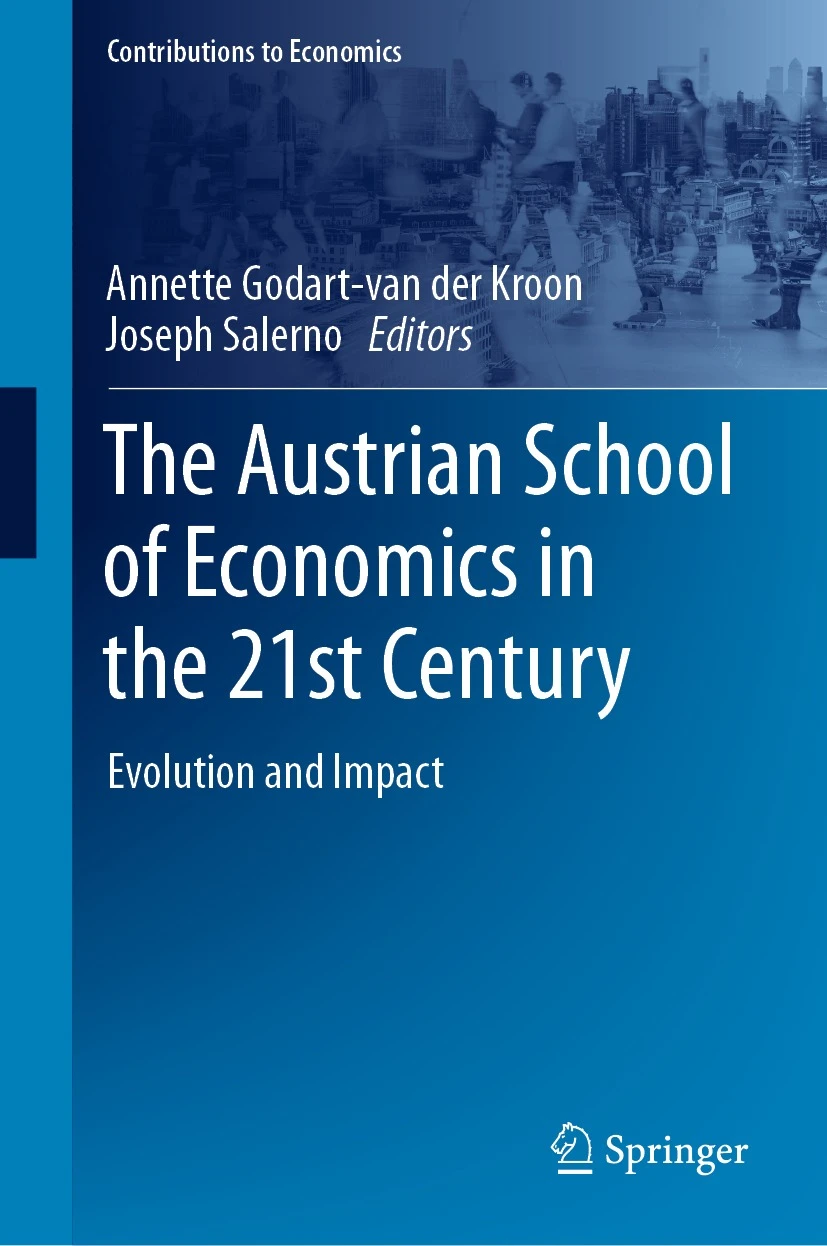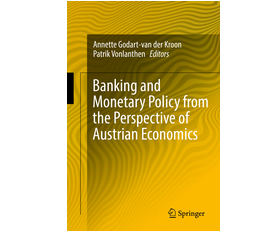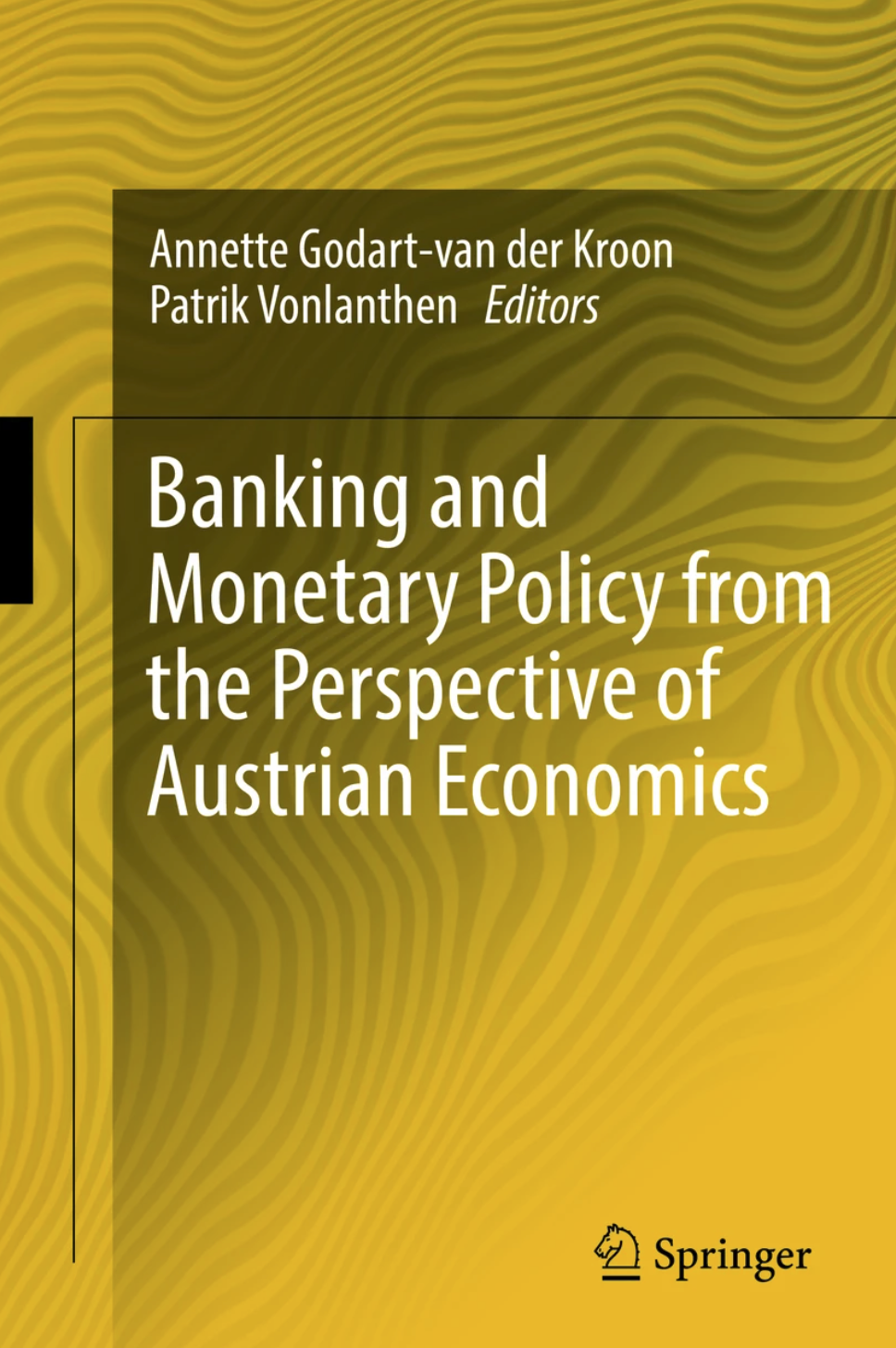Why Sound Money Is “Green” and Central Banks Aren’t

11/27/2020 – Brendan Brown and Philippe Simonnot
[Editor’s note: this is a special preview—for Mises Wire readers—of Europe’s Century of Crises under Dollar Hegemony: A Dialogue on the Global Tyranny of Unsound Money, a dialogue book by Brendan Brown and Philippe Simonnot newly published by Palgrave Macmillan.]
Although many central bankers have claimed the central banks are instrumental in ushering in a more green economy, a closer look suggests central banks are anything but “green.” In fact, a sound money economy might be a much more effective tool in improving the physical environment.
Philippe Simonnot:
Ecology is where statism and socialism now have their revenge on capitalism, which stands accused of responsibility for all maladies, especially the running down of our planet’s resources and degradation of climatic conditions. Let us discuss the multiple flaws in this indictment:
First, capitalism has nothing to do with these problems. Marx himself described how the “fanatical perseverance of capitalists to economize on the means of production implies that these are only consumed as economically as possible—nothing gets lost or wasted.”
Second, economists defending capitalism have been the pioneers of research on “externalities” and “public goods” and have proposed solutions (for example carbon pricing) which respect in principle the laws of the market and have had significant positive effects.
Third, capitalism ravaged by unsound money is a source of waste and erroneous investment spending. Capitalism underpinned by sound money, founded on the principles of the gold standard, would be better at finding solutions to problems of the environment, because such a monetary regime is anchored in a real commodity, gold, and not on fictional assets as in the present unsound money regime.
Fourth, the ecologists should be the first to defend a return to the gold standard or at least to a monetary regime respecting the same principles of reality.
Brendan Brown:
There are several ways in which unsound money impedes the “invisible hands” from guiding efficient allocation of resources in the face of environmental dangers. All of these involve the corrupting influences of monetary inflation.
First, investors eschew long-gestation investments, including important “green projects.”
For example, the hoped-for cumulative returns from investment in electricity production aimed at reducing fossil fuel input may be bunched into the far-off future; government action to have prices reflect externalities, such as the levying of carbon taxes which increase over time, might in some cases lengthen this time duration. Yet bouts of asset inflation as occur under anchor-less monetary regimes cause investors to favor projects with short duration; they are fearful of painful depression at some far-off point and favor the apparently high returns from financial engineering.
Second, malinvestment cuts prosperity, lowering appetite for green public goods.
Monetary inflation, of which asset inflation is one key component, goes along with much malinvestment and periodic crisis which rein back the growth of economic prosperity. The appetite of the voting public and their representatives for projects designed to produce public goods which might be well suited for addressing environmental issues (even taking into account all the massive pitfalls of the cost-benefit analysis which ostensibly justifies these) is poor when prosperity is languishing, depressed by realization of future tax increases and charges to pay for these.
Third, asset inflation distorts the price of risk in ways which discourage green investment.
Characteristic of asset inflation is widespread irrational yield-seeking behavior which takes forms ultimately inimical to environment-friendly investment.
A key insight to understanding this connection comes from behavioral finance; most people if offered the alternative of certain loss or a bet with some prospect of high gains but actuarily even a bigger loss, select the bad bet. Under conditions of inflation investors face certain loss on money and “safe” bonds. A popular “bad bet” has been peso-type investments.
These are assets which yield modestly high returns most of the time most of the time but also feature a small chance of eventual huge loss. The term owes its origin to investments in the Mexican peso during its long period through until the mid-1970s of having a fixed exchange rate against the dollar—in a context where there were widespread expectations of an eventual large devaluation to correct fundamental overvaluation.
A big modern-day example of peso-type investment are strategies in which investors get a return kicker by selling “out of the money” puts which most of the time yield good income but blow up during occasional crashes. A variant of this peso-type investment are high-yield bonds, including those, say, of barely investment-grade status.
A business in failing to invest in a strategy which would reduce its vulnerability to growing environmental disasters such as flooding (whether from hurricane, rising sea levels, or whatever) in the future is in effect an accomplice in turning its future likely returns into a peso-type asset for its investors. If instead it meticulously made long-gestation investments and related strategic decisions which reduced long-run hazard in its returns, the capital markets would penalize It for doing so (under monetary inflation conditions).
Moreover, under the distorted market conditions prevailing, the given business could obtain in some cases cheap insurance against specific losses related to future environmental disasters courtesy of investors only too willing to buy the equity or bonds of insurers offering protection. (An example of “too willing” would be the purchase by investors of “catastrophe bonds” issued by insurers which most of the time pay out high returns but in the event of specific catastrophes—including flood—as mentioned in the documentation principal would be renounced.)
Without these highlighted corruptions of market signaling by monetary inflation, businesses would spend more on projects which mitigated their exposure to long-run environmental dangers. Insurance against these dangers would be considerably more expensive than under present irrational market conditions. The firms, their stakeholders, and the wider population, would be much readier (expressed ultimately in the political marketplace) to support politicians and parties advocating public goods projects and plans for having externalities reflected in market prices, which would bring a big saving in their own capital spending costs or insurance costs over the long run.
Fourth, unsound money spawns environmentally damaging investment.
We should consider actual examples during the present long-run asset inflation of bad money having worked in an environmentally unfriendly way.
There is the obvious case of the oil bubble in 2008, followed by a further bubble in the early teens, coupled with the tremendous credit bubble–driven overinvestment in shale oil. On the demand side there was the tremendous overinvestment in the aircraft industry induced in part by the availability of spectacularly cheap leasing terms available from the bubble market in global credit.
Then we should consider an epicenter of asset inflation in the global economy—China—and how corporate entities there (including financial institutions) have had great access to global credit. In effect this access has helped the Chinese economic and political system to survive. Wasteful (and overreported) patterns of economic growth in that country including much malinvestment, reflected in disappointing overall prosperity, have gone along with high growth of fossil fuel consumption.
The failure of China’s economic model, propped up by the global credit bubble and fêted by a crony capitalist connection between the biggest gainers from asset inflation in Wall Street (especially private equity) and Washington, has made an imprint in the agricultural sector. Their domestic beef production has fallen far below soaring consumption demand—meaning huge growth in demand for Brazilian beef which in turn has gone along with a felling down of the Amazon to make way for pasturing cattle.
Authors:
Brendan Brown is a founding partner of Macro Hedge Advisors (www.macrohedgeadvisors.com) and senior fellow at Hudson Institute. As an international monetary and financial economist, consultant, and author, his roles have included Head of Economic Research at Mitsubishi UFJ Financial Group. He is also an Associated Scholar of the Mises Institute. His latest book is The Case Against 2 Per Cent Inflation (Palgrave, 2018) and he is publisher of “Monetary
Scenarios,” Euro Crash: How Asset Price Inflation Destroys the Wealth of Nations and The Global Curse of the Federal Reserve: Manifesto for a Second Monetarist Revolution.
Philippe Simonnot is a French economist. He was professor of Law and Economics at the University of Paris Sorbonne and Paris Nanterre and has a doctorate in economics. He is the author of many books on history and economics, particularly in the monetary field. His latest book is Nouvelles leçons d’économie contemporaine (2018). He also publishes columns on economic affairs in the press, particularly Le Monde.


